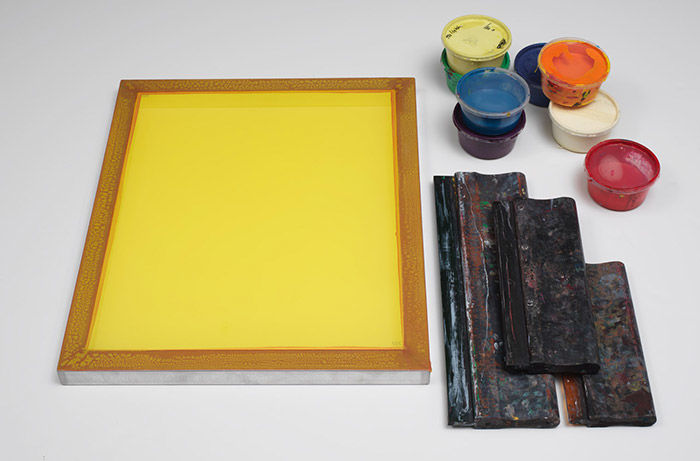Landscape 5
Roy Lichtenstein American
Not on view
In the mid-1960s, Roy Lichtenstein abandoned the comic-book motifs for which he was initially celebrated. However, he continued to employ a graphic formal vocabulary inspired by the popular-culture source, comprising Ben-Day dots, diagonal slashes, black outlines, and a bold palette of pure, unmodulated color. Lichtenstein made intaglio prints and woodcuts as a young artist, and in the early 1960s, he issued screenprints in tandem with exhibitions of his paintings and for editions featuring Pop artists.
Ten Landscapes was his first solo print portfolio, and he was deeply involved with its production. He created preparatory drawings and collages, cut each screenprint stencil by hand, shot the photographs, and, to ensure that each print had the proper moiré pattern, supervised the cutting of the Rowlux
(a type of plastic sheet he found in a novelty store and frequently incorporated in his art). The prints and the collage Tremaine Christmas Card (Seascape) call to mind Lichtenstein’s 1964 Landscape series of paintings and drawings in which he also engaged this traditional genre with a decidedly Pop vocabulary. Some of the Landscape prints have elements that correspond to those from picture postcards and comic-book sources (such as Landscape 1, which has details from a panel in Star Spangled War Stories), but most are imaginary views created by the artist. With these works, synthetic materials such as Mylar and Rowlux provide a contemporary, even industrial, aesthetic. Reflecting light, they create a sense of movement that corresponds to the shimmering and shifting effects of light and water.
Due to rights restrictions, this image cannot be enlarged, viewed at full screen, or downloaded.

